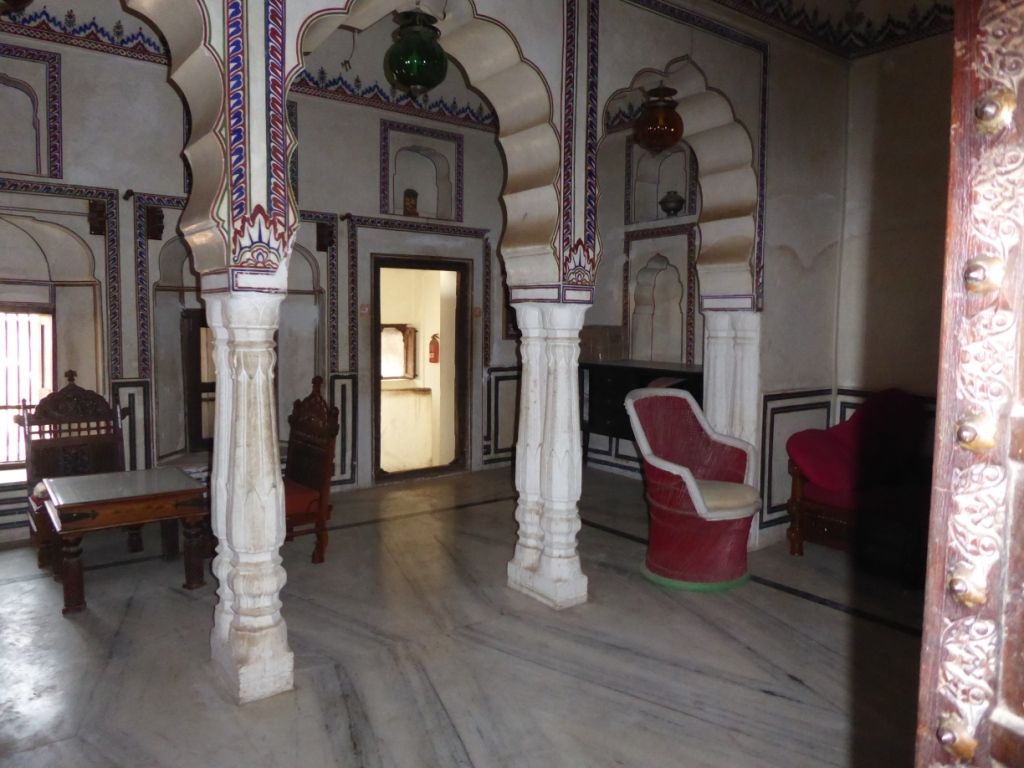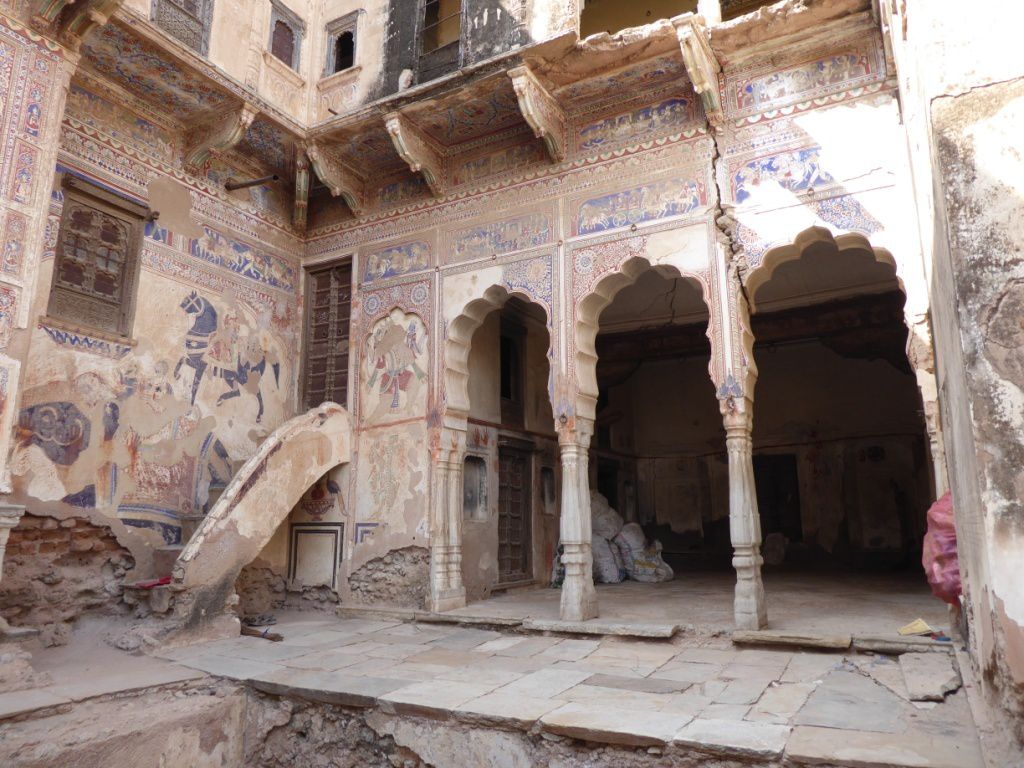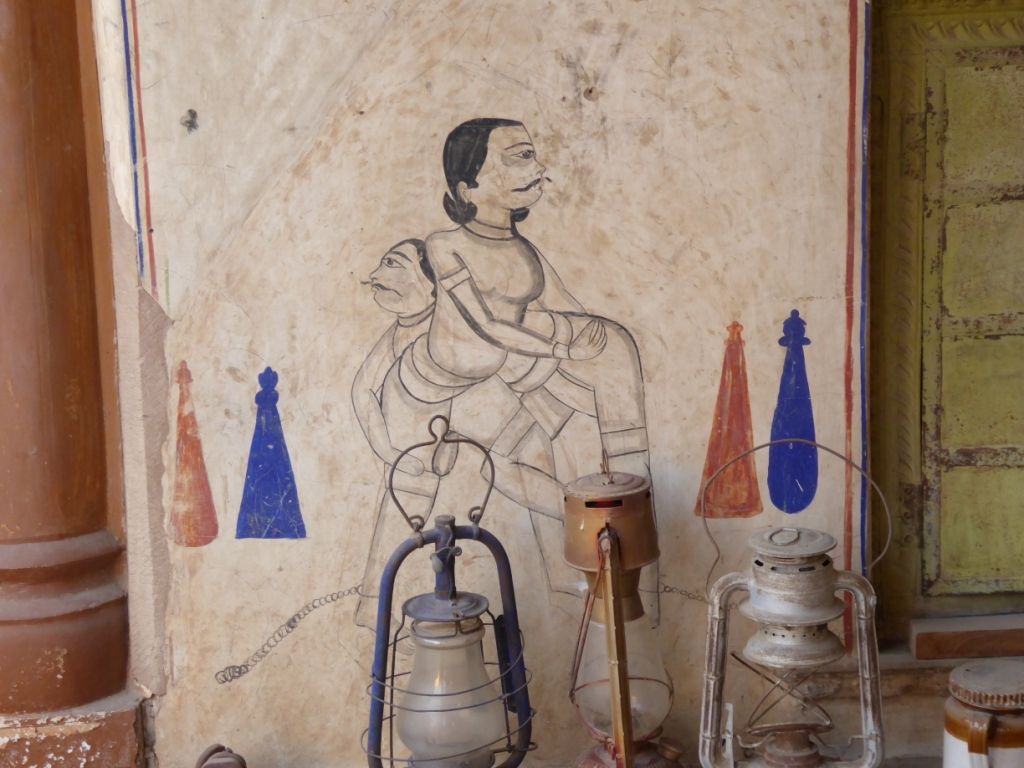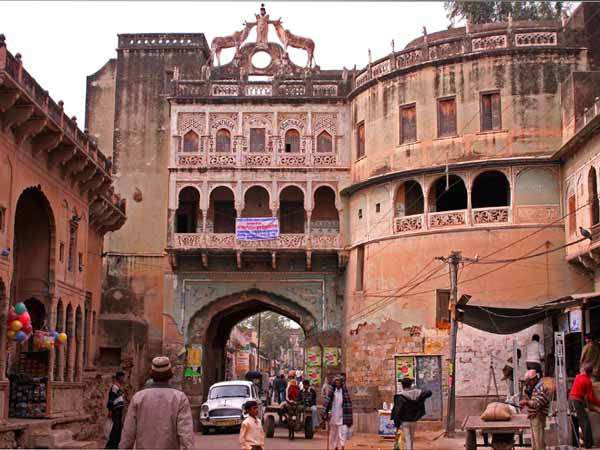Mandawa
Publié le 19 Octobre 2017
Ok, voilà la partie « plus » du voyage, qui s’est trouvée rajoutée sans préméditation, car cette journée à Mandawa pour Divali n’était pas prévue… Je devais avoir une troisième journée de cours à BK BIET et comme je l’ai dit, je crois, le directeur s’est avisé de ce qu’il ne pouvait pas garder les étudiants ce jour-là (c’est la fête n°1 en Inde), et les cours ont été annulés. Shridhar n’avait pas vraiment regardé les dates quand il m’avait proposé les trois jours de cours à la file. Donc les étudiants ont eu leur certificat d’assistance au cours de français pour seulement deux jours (8 heures) au lieu de trois (12 heures) et tout le monde est content ! Moi le premier j’avoue, même si les cours se sont très bien passés, mais une journée de vacances n’était pas pour me déplaire… Bref, me voici attablé dans le patio de la Mandawa Haveli, avec les bruits de Divali dans la rue, mais au-dessus de moi le vacarme encore plus assourdissant des oiseaux qui colonisent un énorme buisson de bougainvillées colorées. Bon, je n’ai pas besoin de beaucoup de concentration pour taper ce petit compte-rendu !
Je suis parti ce matin de Pilani, dans la voiture du directeur le Pr Bhatnagar, et conduit par un chauffeur qui visiblement a l’habitude de la route… Autant dire que ça a été assez torché ! Il roulait des fois à 120 kmh, et même si sur les routes à cette vitesse il fallait qu’il y ait pas trop de monde, il y avait aussi d’autres types de routes, où il n’était pas moins agiles, notamment un type que je n’avais encore pas vu, les « single roads » ! Allez, je vous laisse quelques secondes pour imaginer ce que sont les single roads… trouvé ? C’est en fait la même chose qu’une single-track road, une route à une voie, mais où la voie carrossable est posée au milieu d’une route de terre, et les véhicules s’y croisent en descendant de la voie carrossable, de chaque côté, pour ensuite y re-grimper une fois l’obstacle dépasser. Impressions fortes garanties, car le croisement se fait à la dernière minute, dans un nuage de poussière… Une fois, vraiment, avec un gros land-rover droit devant nous, j’ai fermé les yeux en m’agrippant à la poignée au-dessus de la fenêtre !
Enfin, sain et sauf, je me suis posé dans ma chambre, une suite s’il vous plaît, appelée Nilesh, et je suis sorti me balader, au fil des rues, en me laisser porter de ci, de là, et alpaguer par les quémandeurs et propositionneurs, pas trop difficiles à écarter, j’ai pu entrer à droite et à gauche, notamment dans ces havelis soit splendides soit défraîchies qui émaillent le centre-ville. Vers 1h30, alors que j’achetais des bananes, je me suis fait accoster par un guide, qui m’a quand même pris par surprise, car je ne m’attendais pas à un guide adulte (on avait été guidé par un jeune la dernière fois en 2010), et ma foi, c’était quand même plutôt sympathique, même si ce n’était pas ce que je voulais au départ. Il m’a fait voir des endroits où j’étais déjà passé, et d’autres que je n’avais pas vus. Globalement, quand même, la situation du touriste moyen que je suis quand même, malgré ma venue non « organisée » me dispose à être utilisé pour ce commerce compréhensible.
Un des meilleurs souvenirs est le tchaï offert par deux personnes, homme et femme, qui, quand je passais devant leur maison, étaient allongés sur leur charpoy, mais se sont levés en me voyant, et m’ont hélé en me souhaitant Happy Divali. A ma réponse, ils m’ont invité à entrer, et m’ont monté leur intérieur, bien pauvre et délabré. Quelques mots d’échange pour me dire qu’ils n’avaient pas d’eau ni d’électricité : je ne crois pas que ce discours visait à me culpabiliser et du coup leur donner quelque chose. Enfin, sait-on jamais, mais cela ne donnait pas l’impression d’une démarche vénale. Tout à l’heure, le guide « Jackil » m’a dit qu’il m’invitait à aller manger avec lui quelque part en ville, que je lui premettais de me trouver devant la haveli à 19h, et du coup je me suis renseigné, BK BIET m’a payé le repas du soir et le petit déj du matin… donc je pense quand même que je vais lui dire tout à l’heure que je reste, c’est quand même normal. Il y a un super roof-top où le restaurant est installé. Et un groupe d’italiens seront mes voisins pour le repas. On verra ! Et demain, à l’aube (je ne sais pas si la campagne blanchit ici), je partirai avec le taxi vers 6h pour l’aéroport. Avion à 13 :15, arrivée prévue à CDG vers 19h, et maison vers… 23h ? Happy Divali !
/image%2F1489169%2F20200220%2Fob_9722d6_banner-11.JPG)











